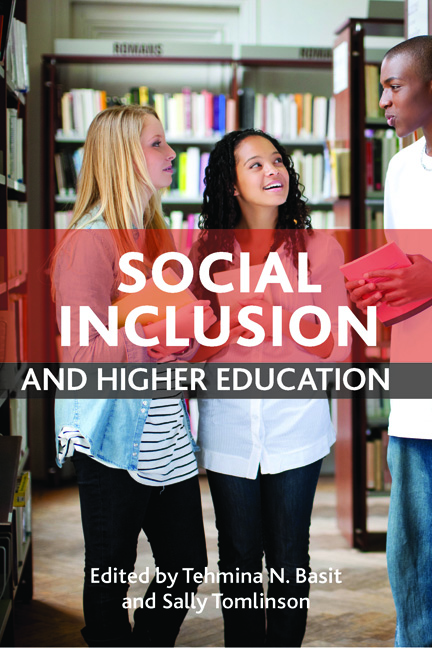thirteen - Widening access to higher education through partnership working
Published online by Cambridge University Press: 01 September 2022
Summary
Introduction
This chapter considers the policy and practice of partnership working among educational organisations and related service providers as a means of promoting social inclusion in higher education (HE). It draws on an empirical study of partnership working in an area of England that has low levels of participation in HE, consistently performs poorly in national measures of educational achievement and contains pockets of severe economic and social deprivation. The empirical research focuses on the work of senior managers from 17 organisations who formed a sub-regional partnership as a strategy to raise aspirations, widen participation in HE and promote social inclusion.
During the five-year research, these senior managers expanded the influence and reach of the partnership to include 103 individuals and 30 organisations in their collaborative activities, which involved developing progression routes into HE for ‘non-traditional’ learners. The study was undertaken during New Labour's period in office during which both partnership working and social inclusion were key policy priorities vigorously promoted through initiatives and financial incentives. The chapter, therefore, also reflects on the policy context and the agency of individuals and organisations in working towards the goal of social inclusion. It begins by considering the broader context of collaboration and partnership working as a means for increasing participation and social inclusion in HE, and then presents data from the case study to illuminate the practice on the ground.
Collaboration and partnership working between further and higher education
Collaborative working arrangements between different sectors of education, for example, compacts between schools and colleges, and franchising between further education colleges and universities, have existed from the 1980s (Bird, 1996). Such arrangements have been a means for opening up opportunities for individuals and groups who may not have aspired to further and higher education, or as routes for adults without traditional entry qualifications, and hence linked to strategies for promoting social inclusion, as noted in Chapter One of this volume. Paczuska (1999) dates links and partnerships between further education (FE) and HE to the 1960s, although the main growth was in the 1980s and 1990s.
- Type
- Chapter
- Information
- Social Inclusion and Higher Education , pp. 273 - 294Publisher: Bristol University PressPrint publication year: 2012

